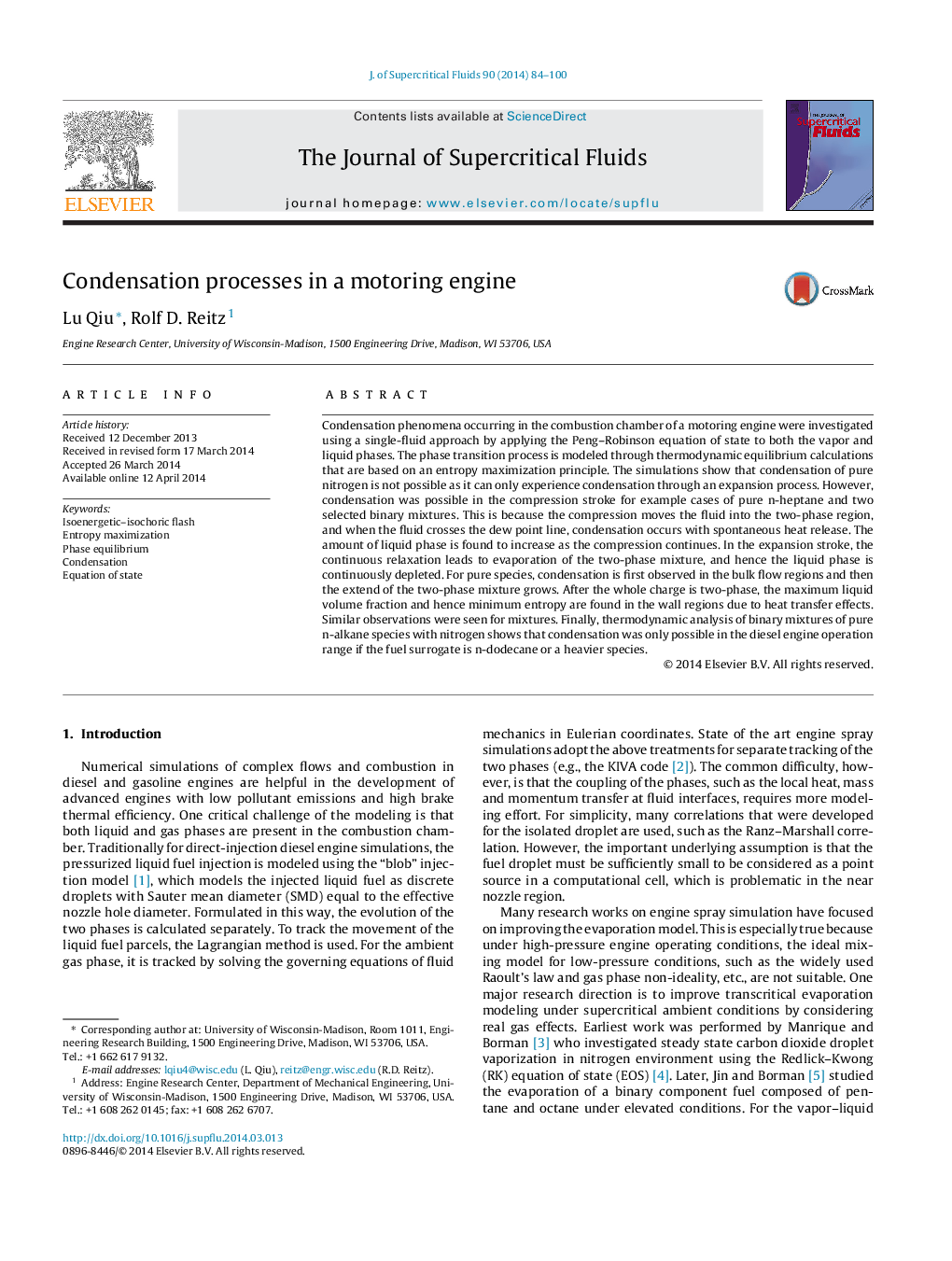| Article ID | Journal | Published Year | Pages | File Type |
|---|---|---|---|---|
| 230515 | The Journal of Supercritical Fluids | 2014 | 17 Pages |
•Condensation processes are examined in practical engine geometry.•Fluid dynamics simulation is performed with real gas equation of state.•Phase transition is modeled through thermodynamic equilibrium calculations.•Equilibrium calculations are based on rigorous isoenergetic–isochoric flash.
Condensation phenomena occurring in the combustion chamber of a motoring engine were investigated using a single-fluid approach by applying the Peng–Robinson equation of state to both the vapor and liquid phases. The phase transition process is modeled through thermodynamic equilibrium calculations that are based on an entropy maximization principle. The simulations show that condensation of pure nitrogen is not possible as it can only experience condensation through an expansion process. However, condensation was possible in the compression stroke for example cases of pure n-heptane and two selected binary mixtures. This is because the compression moves the fluid into the two-phase region, and when the fluid crosses the dew point line, condensation occurs with spontaneous heat release. The amount of liquid phase is found to increase as the compression continues. In the expansion stroke, the continuous relaxation leads to evaporation of the two-phase mixture, and hence the liquid phase is continuously depleted. For pure species, condensation is first observed in the bulk flow regions and then the extend of the two-phase mixture grows. After the whole charge is two-phase, the maximum liquid volume fraction and hence minimum entropy are found in the wall regions due to heat transfer effects. Similar observations were seen for mixtures. Finally, thermodynamic analysis of binary mixtures of pure n-alkane species with nitrogen shows that condensation was only possible in the diesel engine operation range if the fuel surrogate is n-dodecane or a heavier species.
Graphical abstractFigure optionsDownload full-size imageDownload as PowerPoint slide
